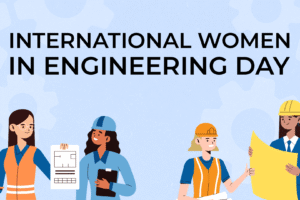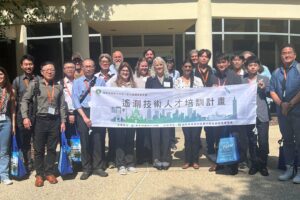Collaboration, long-term commitment by many is reviving the Indian River Lagoon
March 21, 2024
Boating is one of the recreational activities popular on the Indian River Lagoon. This photo was taken near the Grant Historical House at Fisherman’s Landing.
Florida’s beloved Indian River Lagoon is showing signs of improving health, as coordinated statewide and grassroot efforts are taking affect.
The Indian River Lagoon is a shallow-water estuary stretching along 40 percent of Florida’s east coast, spanning 156 miles from Ponce de Leon Inlet in Volusia County to the southern boundary of Martin County. Over the years, the region’s way of life has been plagued by harmful algal blooms resulting from decades of human impacts from nutrients from stormwater runoff, drainage canals and other sources that caused periods with poor water quality that come with a growing population. These factors overloaded the lagoon’s ability to naturally recover.
Now, however, a combination of state funding, St. Johns River Water Management District-led and local government projects, and growing awareness of the lagoon’s challenges among residents and leaders are all helping to ensure the lagoon will continue to boost the region’s and state’s economy, as well as remain the unique environmental place that drew so many to its shores.
The District’s work has been ongoing to restore this waterway, which in 2016 was estimated to have a $7.6 billion economic impact on the region. For many years, the District has partnered with other agencies, including the Florida Department of Environmental Protection (DEP), local governments and water utilities to design and build tailor-made projects to restore degraded water bodies, including the lagoon. Some of the recent work has included dredging nutrient-rich muck from lagoon tributaries, including the Eau Gallie River, purchasing and preserving land in conservation areas, and awarding nearly $40 million for cost-share projects in lagoon communities, leveraging $81 million in public dollars when combined with local matching funds and state funds from DEP.
Since fiscal year 2020–2021, the state has committed more than $100 million annually for water quality improvement projects, with almost 50 percent for projects in the lagoon. These projects and the funding are having measurable impacts on the lagoon.
One of the areas where we’re seeing improved water quality is in the regrowth and expansion of seagrasses — vital habitat for lagoon and ocean animals that use the lagoon as a nursery. For example, the Mosquito Lagoon has seen the largest regrowth of seagrass in recent years, where mean percent coverage increased from 6.5% in summer 2022 to 20% in summer 2023. As District and partner projects continue to be implemented, nutrients are expected to continue to decrease and benefit the waterway.
With the momentum already in place, we’re looking ahead to moving the needle even further in 2024. Among our newest projects in the lagoon region are the C-10 Water Management Area (WMA) and the Crane Creek / M-1 Canal project.
C-10 WMA is a proposed 1,300-acre stormwater treatment system located at the west end of Malabar Road, north of the District’s Three Forks Marsh Conservation Area, and south of Sawgrass Lakes WMA in Brevard County. The project will reduce nutrient loads to the lagoon by treating the canal water, restore historic surface water flows back west to the St. Johns River, increase flood protection, improve resiliency, and provide recreational opportunities.
The Crane Creek / M-1 Canal flow restoration project currently serves as a flood control canal, but over 100 years ago it was originally developed to redirect stormwater from 5,300 acres near the St. Johns River to the lagoon. Along with the millions of gallons of water came thousands of pounds of harmful nutrients, including nitrogen and phosphorus. Once complete, the project will restore the natural flow of the stormwater from the lagoon back west, where the water will be treated in a stormwater treatment area prior to reaching the St. Johns River. Funding partners include DEP (provided $2.03 million), Brevard County (contributed $2.45 million through its Save Our Indian River Lagoon program), and $4.5 million alternative water supply funding from federal sources through DEP.
In addition, District staff are developing eight conceptual stormwater-related projects in the region as part of the lagoon stormwater capture and treatment project development and feasibility study update.
Continued restoration is an ongoing challenge, but one our talented and passionate staff embrace as we do the high-quality work that will be needed to continue to restore our natural resources.






